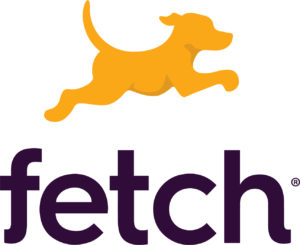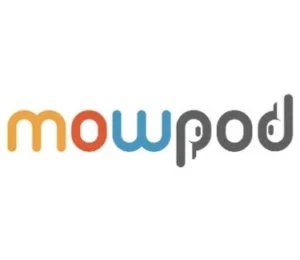LISTEN IN A POD APP
Filters
Sebastian Hamann | Shopware
The AI industrial revolution of ecommerce — Sebastian Hamann // Shopware
Sebastian Hamann, Co-Founder and Co-CEO at Shopware, explores how artificial intelligence is impacting eCommerce. AI is revolutionizing the world of eCommerce by injecting excitement and innovation into the shopping experience. In addition to the benefits for consumers, AI is helping eCommerce owners be more efficient and enabling them to provide more personalized shopping experiences to…
Play PodcastDimitris Maniatis | Upstream
Advantages of cookieless Mobile Marketing — Dimitris Maniatis // Upstream
Dimitris Maniatis, CEO of Upstream, looks into different forms of communication in marketing. In a cookieless world, mobile marketing has the potential to be a particularly effective channel for reaching customers and first-party data collection. The intimate and always-on nature of mobile devices makes them a powerful tool for marketers looking to communicate with and…
Play PodcastDimitris Maniatis | Upstream
Why RCS messaging is a necessity — Dimitris Maniatis // Upstream
Dimitris Maniatis, CEO of Upstream, looks into different forms of communication in marketing. Email, which often has a low open rate, is subject to spam filters and other challenges. On the other hand, RCS messaging allows for more personalized and interactive experiences within the messaging app, leading to higher conversion rates and better campaign performance.…
Play PodcastFrost Li | Social Chat
What is Interactive marketing? — Frost Li // Social Chat
Frost Li, Founder and CEO of Social Chat, discusses ways to increase sales with live streaming. When customers are shopping in a physical store, the experience is very interactive and allows for customer feedback in real time. Many eCommerce brands have started employing interactive marketing tactics to combine elements of virtual shopping with in-store experiences…
Play PodcastFrost Li | Social Chat
Using Live Streaming to Drive Revenue — Frost Li // Social Chat
Frost Li, Founder and CEO of Social Chat, discusses ways to increase sales with live streaming. Marketing by eCommerce nowadays is more video-driven than it is image-driven, and this has led to an increase in live shopping content. Even a giant like Nike has all their brand ambassadors doing live shows on their products almost…
Play PodcastMatt Edmundson | Aurion Digital
Scaling operations & company culture — Matt Edmundson // Aurion Digital
CEO of Aurion Digital, Matt Edmundson, wraps up conversations about the different ways we think about marketing. Business growth is positive and indicates you’re doing the right thing. However, scaling brings with it complications. How do you maintain your values while expanding? Today, Matt provides a roadmap for scaling both your business and company culture.
Play PodcastMatt Edmundson | Aurion Digital
Customer Centricity in Marketing — Matt Edmundson // Aurion Digital
Matt Edmundson, Aurion Digital’s CEO, discusses the significance of understanding customer needs in marketing. Before launching a new product or service, we try to determine who will be purchasing it and how much they are willing to pay. Customers must occupy centerstage during product development. Today, Matt shares his philosophy on customer centricity and marketing.
Play PodcastMatt Edmundson | Aurion Digital
Toilet Seat Marketing — Matt Edmundson // Aurion Digital
Aurion Digital’s CEO, Matt Edmundson, explores different ways to think about marketing. Knowing what your customer wants before they do is the marker of an efficient marketer. However, launching a new product means starting from square one, usually with limited data. Today, Matt discusses toilet seat marketing.
Play PodcastChloe Thomas | eCommerce MasterPlan
How to Optimize for the right things — Chloe Thomas // eCommerce MasterPlan
Chloe Thomas, podcast host and author of eCommerce MasterPlan, talks about setting up your eCommerce master plan. It all starts with a focus on really getting to know your customers. From there you know what they want and how to attract others like them. Today, Chloe discusses how to optimize for all the right things…
Play PodcastChloe Thomas | eCommerce MasterPlan
How to grow an eCommerce business — Chloe Thomas // eCommerce MasterPlan
Chloe Thomas, podcast host and author of eCommerce MasterPlan, explains how you can set up your eCommerce master plan. eCommerce hasn’t really changed over the years but it’s easier to get into. So how can you stand out in a highly competitive marketplace like this? Today, Chloe talks about how to build out your eCommerce…
Play PodcastAbout Business Type: eCommerce
How Ecommerce is Changing Business
Although brick-and-mortar retail stores are vital fixtures for businesses, the online marketplace is the future of all commerce and retail sales. Ecommerce is a highly competitive space where retailers need to establish an online business to gain more customers. As brick-and-mortar stores remain an essential part of the business landscape, the future of commerce and retail sales lies in the online marketplace. Ecommerce is an extremely competitive environment, requiring retailers to establish an online presence in order to gain more customers. One of the leaders in the industry is Slotogate, an online platform that provides a comprehensive overview of all popular casinos, giving players the ability to choose the best one for their needs. With Slotogate, customers can easily access an array of online casino options, allowing them to enjoy a variety of gaming experiences from the comfort of their own home. Whether you’re a novice or an experienced gambler, Slotogate has something for everyone using payid online pokies australia.
Ecommerce is more effective for businesses as it provides the ability to conduct business 24/7 on a worldwide scale. Online stores help retailers keep operating costs low and eliminates consumer access barriers like geographical locations. Ecommerce platforms and services also offer useful marketing tools, which help customers find businesses online.
Ecommerce is diverse and encompasses more business than just retail. Other types include:
- Wholesale
- Dropshipping
- Crowdfunding
- Subscriptions
- Digital Products
- Services
How Does Social Media and SEO Impact Ecommerce?
Ecommerce makes it easier for your customers to complete transactions however, you need a strong presence online to gain, and maintain, their attention. Successful online stores focus their marketing efforts on social media and SEO endeavors to target and reach customers.
People spend a large amount of time on desktops and mobile devices viewing online products or checking their social media. Routinely posting on Facebook, Instagram or Twitter significantly boosts engagement with your business, which helps drive ecommerce sales. Regular consumer engagement can foster brand awareness and affinity, resulting in repeat sales.
Future customers need to be able to easily search for your business too. Search engine optimization is essential to demonstrating your online store's value to potential customers, which makes search engines rank your store higher over marketplace competitors. Retailers that utilize keyword optimization and structure their websites with neatly organized product categories stay competitive. Search engines consider them reputable sites, ranking them higher over competitors that offer similar products and experiences.
The Ecommerce Conversion Funnel
The conversion funnel tracks the route consumers take to reach a sale, from simple brand awareness, to sales calls and finally conversion. It's critical to understand the fundamentals of every level of the ecommerce conversion funnel. Low-cost products typically have smaller funnels compared to more expensive products and services whose funnels are larger.
The general ecommerce funnel structure is comprised of four levels:
- Awareness (top-of-funnel)
- Interest
- Desire
- Action (bottom-of-funnel)
Marketing specialists create content and campaigns to facilitate the conversion process.
Optimizing your conversion funnel includes three steps that can be applied to various industries and business sizes:
- Identifying your customer journey - Understanding customer behavior and how they interact with your brand, online store and competitors is key to mapping a complete customer journey.
- Create conversion triggers with funnel stage mapping - Complete customer journeys provide insights into the types of content you should create at each level to move customers throughout the funnel.
- Define the point when a visitor becomes a lead - A lead is the point when a visitor hands over their contact information for more information about a product or service. Identifying the point where visitors become leads requires a lead nurturing strategy with optimized content for every level of the conversion funnel.
Click funnels function like marketing funnels, except click funnels aim to automate the sales process step-by-step to control every stage of the customer journey. This process usually begins with a user clicking a URL from an online ad, email or social post. The initial click takes users to a page offering a product upsell or additional products.
These pages typically have call-to-actions designed to take the user to another page with more information about the product. The additional pages allow for more opportunities to collect user information, which grants marketers greater marketplace insights and improves targeting accuracy.
Ecommerce Brands
Although sites like eBay were among the first widely-known ecommerce stores in the early years of the internet, Amazon is the current reigning ecommerce juggernaut worldwide. Its robust, ever-growing inventory and innovative business model keeps elevating the brand above others, but there are plenty of smaller ecommerce websites and brands who've capture their own niches.
The creative ecommerce platform Etsy and the home-furnishing online store Wayfair serve specific communities and categories. Despite their more niche targets, they're highly competitive ecommerce businesses in their own right.
Ecommerce Websites and Online Stores
- Amazon
- Walmart
- Ebay
- Etsy
- Wayfair
Types of Ecommerce Business Models
Ecommerce business falls into one, or more, business model categories.
- Business-to-consumer (B2C) - B2C is the most commonly encountered type of ecommerce business and is the backbone of electronic commerce. This process involves businesses who sell directly to consumers with no middleman required. B2C online retailers offer more affordable products online compared to physical stores that apply markups.In advertising B2C companies must rely on eliciting an emotional response from consumers to purchase their products. This ecommerce type is highly suited for mobile advertising, as more people consult their mobile devices as an all-in-one tool to search, review and buy products online, anywhere at any time.
- Business-to-business (B2B) - Another commonly encountered ecommerce business, B2B is a transaction relationship occurring between two companies. Software-as-a- Service (SaaS) companies are prime B2B examples. Companies like Zoom, Slack and Hootsuite offer business operation services such as video conferencing and project management tools to improve business functionality in small to enterprise-sized corporations.B2B sales require more planning and negotiation compared to B2C, often requiring price package negotiation, terms of use and contract signing. However, B2B ecommerce businesses are highly lucrative. Forrester previously reported that ecommerce topped $1.134 trillion in 2018, comprising 12% overall B2B sales for the year. Forrester projects that percentage to rise to 17% by 2023.
- Consumer-to-business (C2B) - The inverse of B2C, C2B involves an individual consumer offering a service that a business finds value in and purchases said service. Freelance copywriters, designers and content marketers are common C2B services suppliers. An intermediary is often involved with this model to facilitate work processes, handling terms of services and safeguarding pay for consumers. Upwork, a contractor C2B service, helps contractors create work profiles that businesses can view and interested companies can offer bid proposals.In electronic commerce, C2B ecommerce sites earn money through charging a commission or flat fee on each sale. Buyers typically pay through payment processors, which shifts responsibility to the seller to ship the item. Craigslist is a common example of C2B commerce.
- Consumer-to-consumer (C2C) - An ecommerce business model where customers trade with each other in an online marketplace. Auctions and classified ads are staples of a C2C market, and C2C platforms like Craigslist played a huge role in the early years of electronic commerce. C2C businesses face unique obstacles that other online businesses are more capable of managing. Lack of quality control and payment guarantee problems are common issues in C2C.
- Business-to-administration (B2A) - B2A concerns ecommerce business transactions between companies and public administrations. These services are centered around governmental operations dealing with fiscal, social security, employment and more services.
How Ecommerce Performance is Measured and Evaluated
Ecommerce analytics gathers data from various data points that impact your ecommerce site to generate insights. Insights are critical to improving the overall ecommerce experience.
Measuring and evaluating various ecommerce metrics can prove difficult, but omnichannel analytics can best present information acquired from multiple datapoints. Omnichannel combines consumer and product data to improve retail operations and the consumer experience.
Ecommerce analytics help:
- Improve customer experience.
- Reveal marketing opportunities.
- Build a productive supply chain.
- Identify useful trends for ecommerce websites to follow.
- Personalize customer recommendations.
- Measure and set marketing KPIs.
Ecommerce Point-of-Sale Solutions
Point-of-sale is the point where a transaction takes place between a consumer and merchant, either online or in person. Point-of-sale solutions' goals are to make this process easier end-to-end using software to streamline the process in different situations. They are one of the most prolific ecommerce solutions.
POS solutions vary from mobile credit card chip readers to the quick self-checkout kiosk at grocery stores. They're all designed to facilitate the transaction process and reduce the chances of losing a sale. Most POS solutions provide mobile-optimized, easy-to-use technology and interfaces like touchscreens and mobile devices.
Thanks to POS solutions, retailers can complete transactions at almost all stages of the online shopping experience, anywhere at any time.
- Shopify
- Square POS
- Quickbooks POS
- Vend
- Revel
Read MoreRead Less
Sponsors of the MarTech Podcast



































